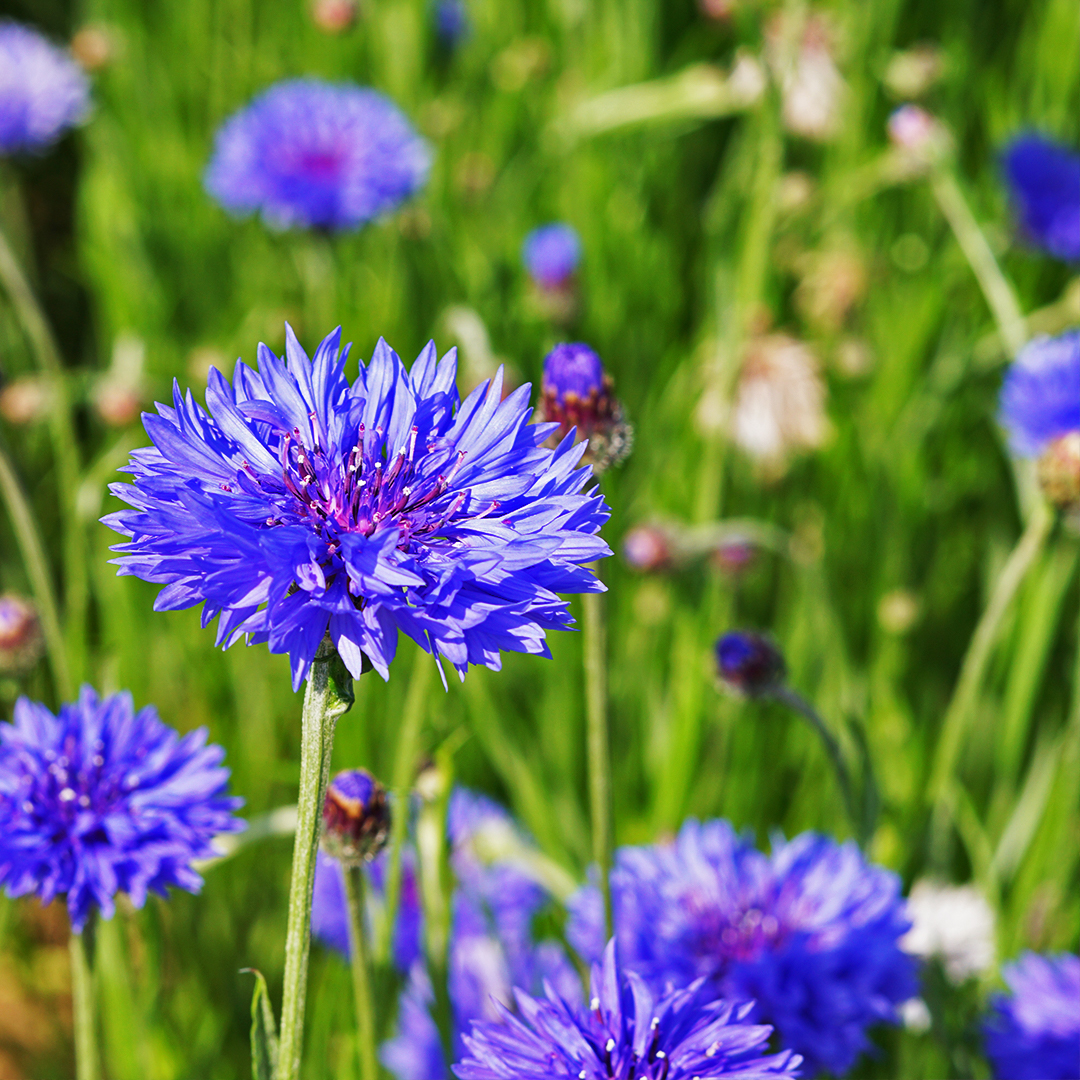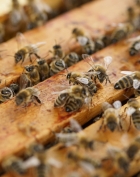Cornflower
Centaurea cyanus
Best Time to See: June, July, August
Habitat: Arable, Farmland
Colour: Blue
An iconic image of rural meadows, these bright blue flowers were once a common sight in cornfields.
This annual wild flower can grow to a metre high, often rising above arable crops. Lower grey-green leaves are considerably longer than upper leaves. Germination occurs in autumn and seeds tend to be short-lived.
Habitat and distribution
This is an arable species and is typically found in the field margins of winter cereals. It prefers a light and sandy soil. It may also be found on roadsides and in hedgerows. It is found throughout the UK, most frequently in central and southern England.
Did you know?
- The Cornflower is also known as the bluebottle, bachelor's buttons, blue bonnets, brooms and brushes, corn-blinks, ladder love, logger-heads, miller's delight, pin-cushion, witch bells, witch's thimble and blavers.
- Before so many exotics began to flood into English gardens, the Cornflower was much cultivated.
- It is striking enough to have given its name to a colour.
- The most valuable blue sapphires are called Cornflower blue, having a medium-dark violet-blue tone.
- Cornflowers were found in Tutankhamun’s tomb in Egypt. Despite having being over 3,000 years old they had lost very little of their colour.
- The French wear Cornflowers much like we wear poppies: as a symbol of remembrance. It is known as the Bleuet de France.
- Cornflower used to be taken against poison, plague, wounds, fevers and inflammations.
Conservation status
The Cornflower has declined dramatically in the wild in the last 60 years and fields full of these flowers were last seen between the wars. Its decrease is due to modern agricultural practices, such as increased use of herbicides and fertilisers, the development of highly competitive crop varieties, the destruction of field-edges, the demise of traditional crop rotations, improved seed-corn cleaning and the conversion of marginal arable land to pasture. These factors continue to be a threat to its future. The decline of the Cornflower illustrates what has happened to many of our wild flowers over the last 60 years.
Fortunately in the late 1980s and early 1990s, it began to reappear particularly on unsprayed set-aside land and in ground disturbed by the Department of Transport's extensive programme of road-building. This brought long-buried seed to the surface.

